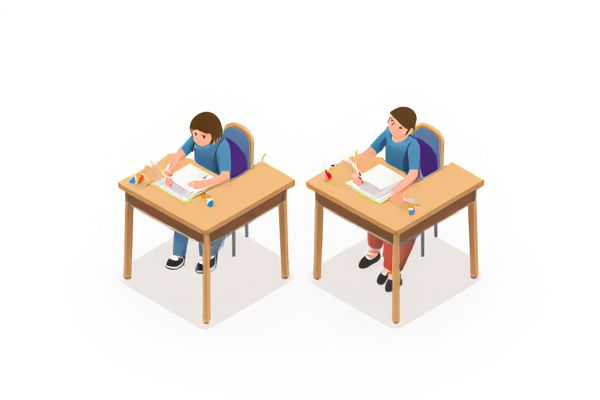
Welcome to our Random Pair Generator, designed to effortlessly create dynamic student pairings for your classroom activities. This tool enhances engagement by mixing students in diverse combinations, promoting collaboration and interactive learning. Experience seamless group management with customizable settings tailored to fit any classroom size or activity type.
Online tool for random pair generator classroom
We have prepared several samples for a random pair generator designed specifically for classroom use. You can easily enter your own list or choose from the examples provided. With just one click, the tool will generate a randomized list along with a selected value for your convenience.Data Source
Single Result
Multiple Results
Introduction to Random Pair Generators in the Classroom
Random pair generators in the classroom enhance student collaboration by automatically creating diverse student pairs for discussions or projects. These tools use algorithms to ensure unbiased and varied pairings, promoting inclusivity and equal participation. Incorporating random pair generators fosters engagement and helps break social barriers in educational settings.
Benefits of Using Random Pair Generators for Students
Random pair generators in classrooms foster equitable collaboration by ensuring diverse student interactions, which enhances communication and social skills. These tools promote active participation and reduce bias in group assignments, creating an inclusive learning environment. Using random pair generators boosts student engagement and critical thinking through varied peer perspectives.
Popular Digital Tools for Creating Random Pairs
Popular digital tools for creating random pairs in the classroom include platforms like Random Name Picker, Team Shake, and Wheel of Names, which facilitate quick and unbiased student grouping. These tools offer customizable options such as group size, exclusion criteria, and repeat pair prevention to enhance collaborative learning. Integration with digital classroom environments like Google Classroom and Microsoft Teams improves workflow and engagement by seamlessly incorporating random pairing into daily activities.
Manual Methods for Generating Random Pairs
Manual methods for generating random pairs in classrooms often include drawing names from a hat or using index cards shuffled by students. These techniques ensure fairness and unpredictability while requiring minimal technology, making them ideal for diverse educational settings. Teachers can easily implement these strategies to promote student interaction and collaborative learning without relying on digital tools.
Enhancing Student Engagement with Random Pairing
Random pair generators in classrooms boost student engagement by fostering collaboration and diverse interaction among peers, making learning more dynamic and inclusive. These tools utilize algorithms to create unbiased and varied student pairings, encouraging active participation and enhancing communication skills. By integrating random pairing into lesson plans, educators can stimulate critical thinking and create a more interactive learning environment that supports academic success.
Encouraging Inclusivity and Collaboration
Random pair generators in classrooms promote inclusivity by enabling diverse student interactions beyond friend groups and social circles. This tool fosters collaboration by creating balanced teams, ensuring all students engage actively and learn from varied perspectives. Integrating random pairing supports a dynamic learning environment where every voice is valued and teamwork skills are strengthened.
Classroom Activities Enhanced by Random Pairing
Random pair generators revolutionize classroom activities by fostering dynamic student interactions and enhancing collaborative learning. These tools create diverse pairings that break social cliques, encourage equitable participation, and stimulate critical thinking through varied perspectives. Incorporating random pair generators into lesson plans increases engagement, promotes communication skills, and supports differentiated instruction tailored to student needs.
Addressing Common Challenges with Random Pair Generators
Random pair generators in classrooms overcome common challenges such as bias and repetition by utilizing algorithms that ensure diverse and equitable pairings. These tools promote inclusivity by randomizing student interactions, preventing cliques and encouraging collaboration among all students. Integration with digital platforms allows teachers to quickly generate pairs, saving time and enhancing classroom dynamics through varied peer engagement.
Best Practices for Effective Pairing Strategies
Implementing random pair generators in the classroom enhances student engagement by promoting diverse collaborations and reducing bias in group formation. Best practices include ensuring balanced skill levels between pairs, rotating partners regularly to expose students to varied perspectives, and incorporating feedback loops to assess pairing effectiveness. Leveraging technology tools with customizable criteria can further optimize pairings, fostering an inclusive and dynamic learning environment.
Evaluating the Impact of Random Pair Generators on Learning Outcomes
Random pair generators in classrooms enhance collaborative learning by promoting diverse student interactions and reducing bias in group selection. Research indicates that randomized pairing can improve engagement, critical thinking, and knowledge retention compared to self-selected groups. Studies measuring test scores and participation rates report statistically significant gains in learning outcomes when random pair generation tools are integrated into curriculum designs.
 azrandom.com
azrandom.com